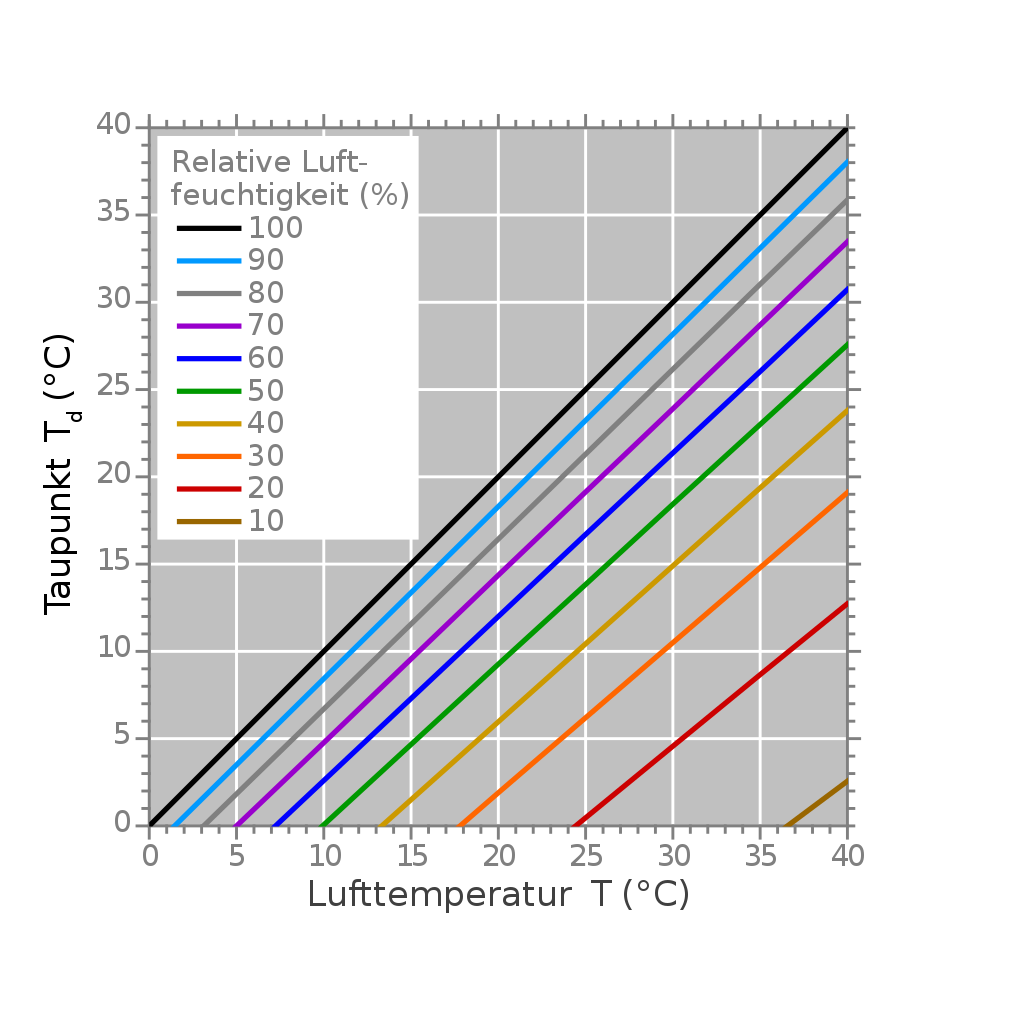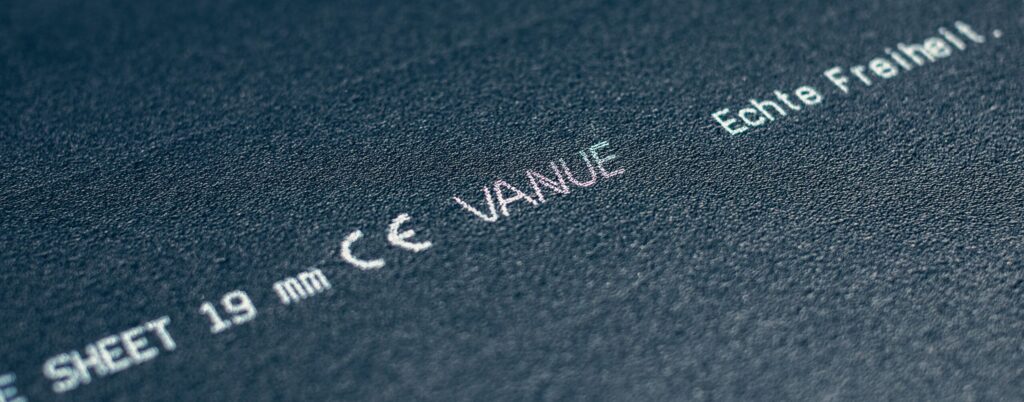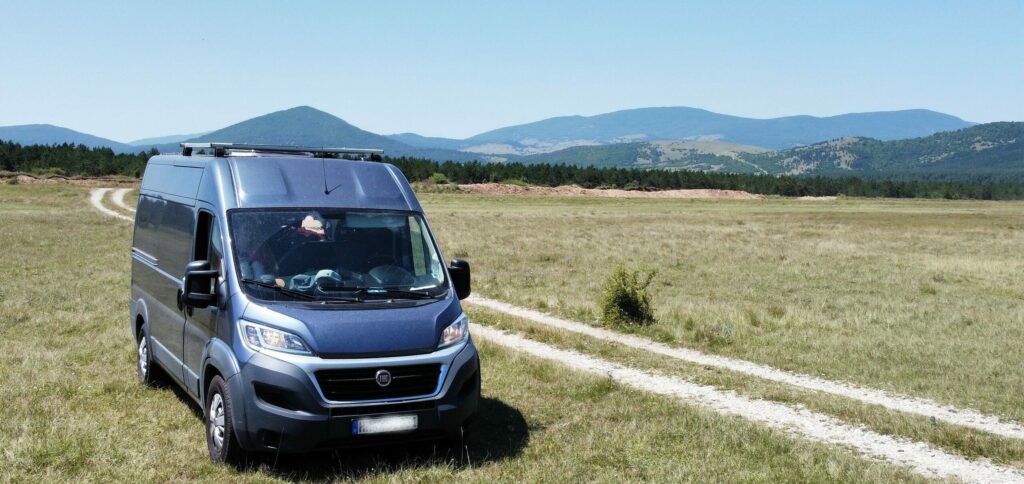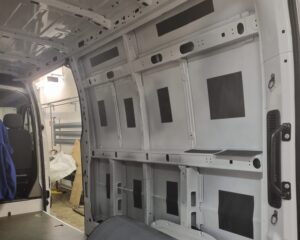
Environmental protection and sustainability are also very important to us when it comes to camper expansion and we hate garbage just like you! Therefore, the efforts towards ecological vehicle insulation are definitely worth supporting. However, the current situation is that the risks associated with the natural insulating materials we are familiar with when converting campers are often underestimated.
This article is intended to show you as simply as possible what risks there are with natural insulation materials in mobile homes and campers and how these risks are reduced by combining them with the VANUE Insulates avoid.
Brief information about me: I studied vehicle construction with a focus on bodywork development and specialized in insulating material solutions for vehicles and aerospace and was involved in the development of the VANUE Insulate. I have already converted three campers and am currently working on my fourth project, a Fiat Ducato H2L2.

What do you need the insulation in the camper for?
The insulation (colloquially insulation) is an essential part of every camping vehicle. It keeps the vehicle warmer for longer in winter and cool for longer in summer. Proper insulation also reduces noise, making the vehicle more comfortable for longer journeys.

Which natural insulating materials are particularly sustainable?
- hemp
- Combination plates made of hemp and jute
- sheep wool
- cork boards
Under what conditions can natural insulation materials be used for camping vehicles?
There are a variety of natural insulation materials used for recreational vehicles in warmer climates. These materials all have one thing in common, they are open to water vapor diffusion, which means that water vapor from the air can get through the material without much resistance. These insulating materials are therefore only suitable as the sole insulating material in the vehicle for use in regions where it is very warm and the temperatures do not fall below 10 °C even at night. In other words, the insulation is mainly used to keep the energy costs for cooling the vehicle as low as possible.
Can the problem be solved with a vapor barrier / vapor barrier?
Unfortunately not, the bodywork of a van is so complex and has so many openings and holes that it is impossible to install a proper vapor barrier. In the worst case, a vapor barrier ensures that the moisture stays in the insulation much longer, which can massively accelerate the formation of mold and corrosion in the vehicle.
Optimum temperature conditions for ecological insulation material
One person releases about 2 liters of moisture into the environment every night, so humidity levels of 70 % and more in campers are not uncommon. If you look at the dew point diagram, you can see that at an interior temperature of 20 °C and a relative humidity of 70 %, the dew point temperature is around 14 °C.

When insulating with natural insulating materials, this means that condensation forms on the inside of the body from an outside temperature of 14 °C. Even if the insulating material cannot absorb moisture, the moisture collects on the material, which prevents the condensation water from draining through the body. So if you only travel with your camper in very warm countries, insulation made exclusively from natural insulation materials can work.

Are natural insulation materials harmful to health?
The biggest problem with moisture in the vehicle is that the condensation water in the vehicle thaws/condenses much faster than it evaporates. This often results in the insulating material being wet for far too long, which means it begins to mold and the bodywork rusts. Most people only notice mold when it is too late and it has worked its way through the wood paneling via the insulation. Mold exposure in such a small space can have serious health consequences.

Which insulating materials should I use for camper insulation instead?
This is exactly the question I spent a long time developing the VANUE Insulate. After various calculations, laboratory tests and tests in my own camper, it became clear that sensible insulation without any health risk for the average German campervan can only be implemented with insulation materials that are impermeable to water vapor diffusion. That's why our VANUE Insulate consists of a synthetic rubber that doesn't give water vapor a chance to get to the sheet metal of the body.
Can VANUE Insulate be combined with natural insulating materials?
Yes, that's no problem at all, it's just important that the first layer of VANUE Insulate is of sufficient strength directly on the sheet metal surfaces is glued and the natural insulating materials are applied over our rubber and no contact have to the body panel. One layer is enough for climate zones like Germany VANUE Insulate 19mm. If you want to travel to Scandinavia with a camper in winter, you should install at least two layers of 19 mm.

Should I be afraid of pollutants?
Is the material suitable for traveling with sensitive animals or small children?
As you can see here from my co-pilot Rocky, I travel with a dog myself. It was therefore clear from the start of development that there could be no compromises in terms of air quality. Even in combination with ecological insulating materials, there is no health risk as long as the natural insulating materials used are free of harmful substances and have been installed correctly.






